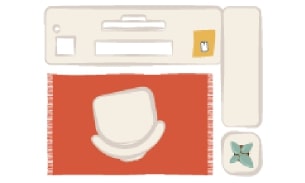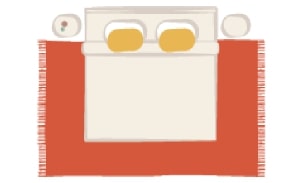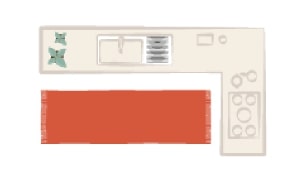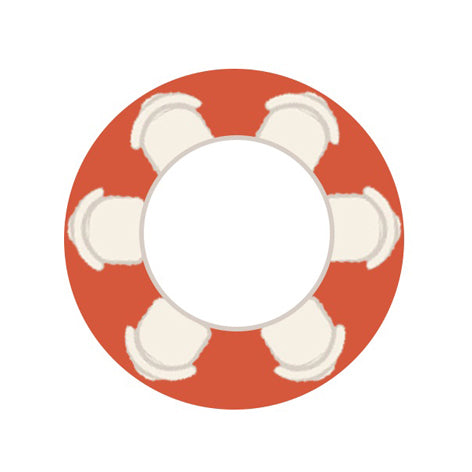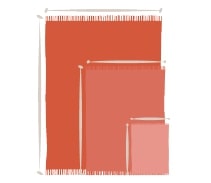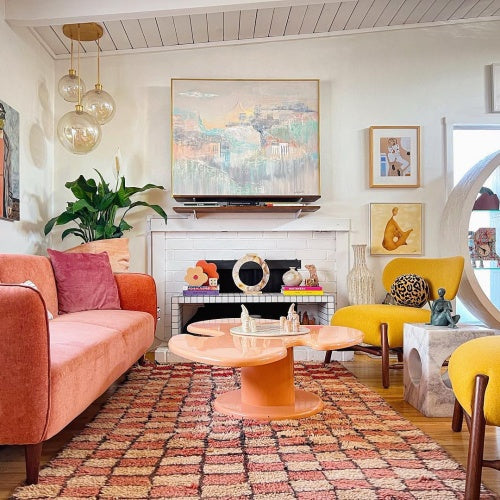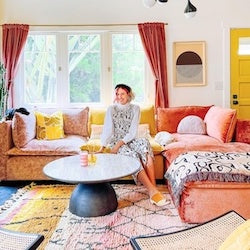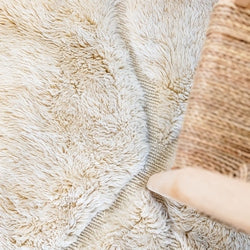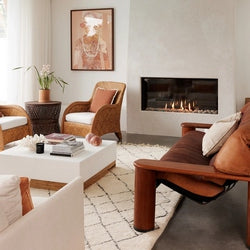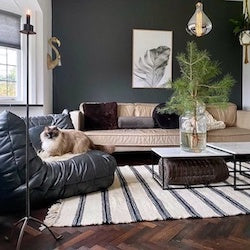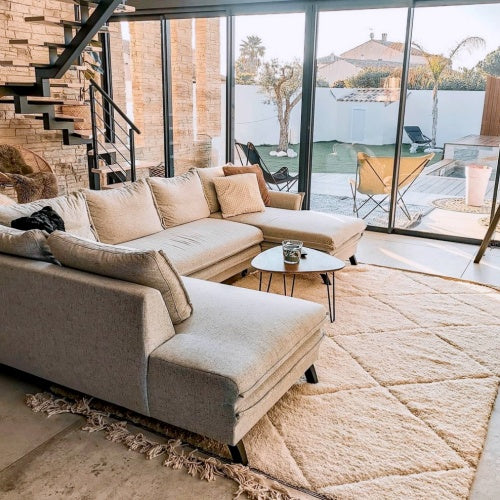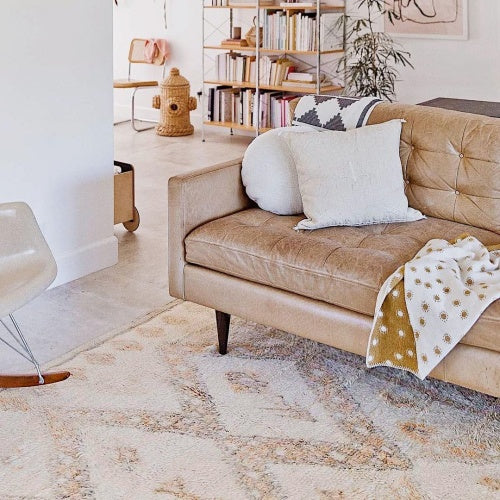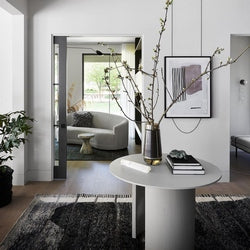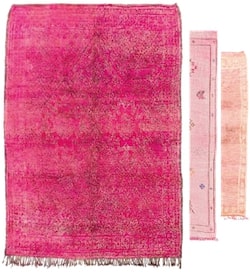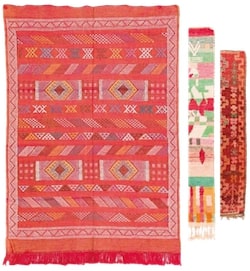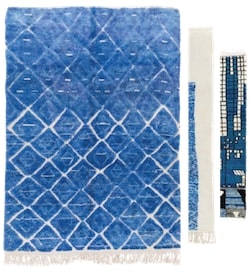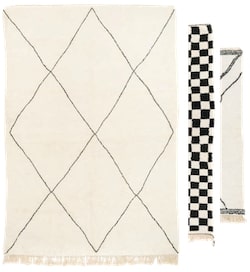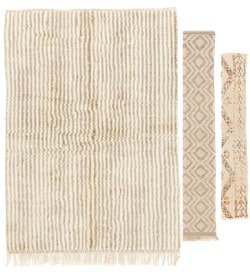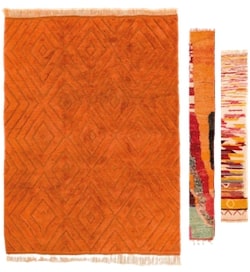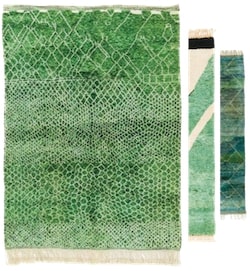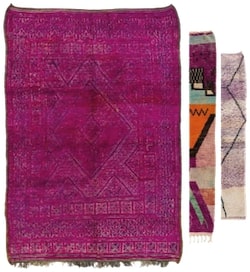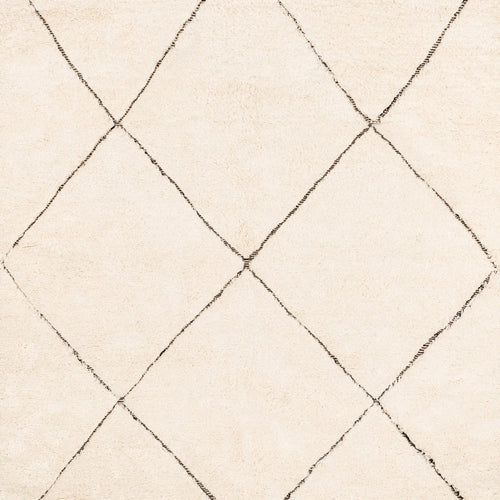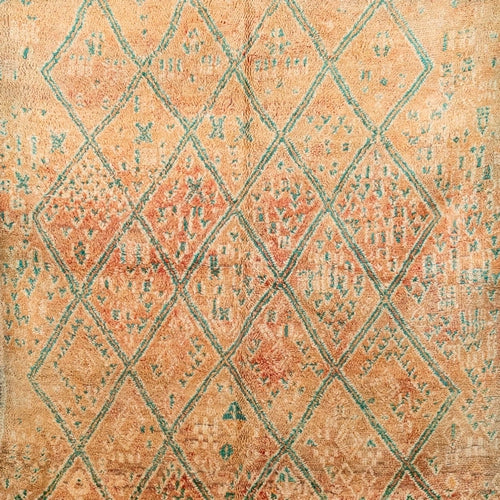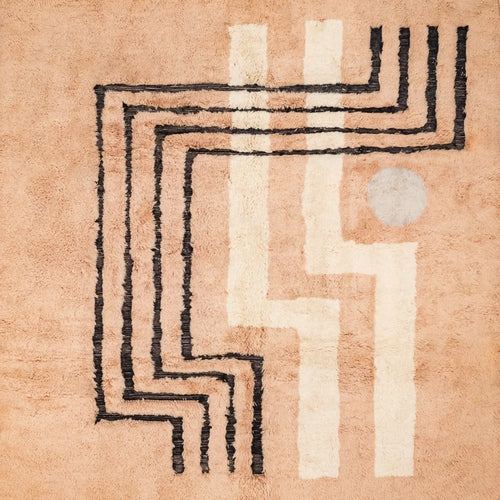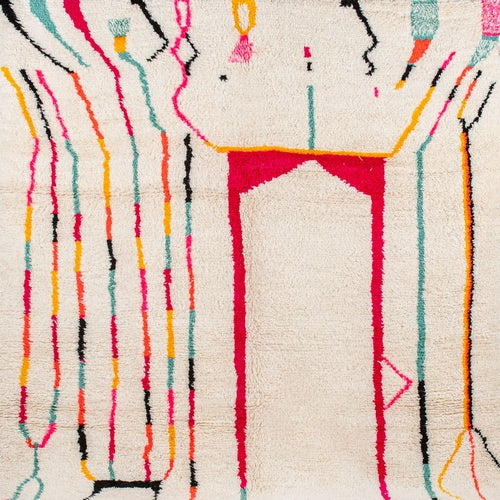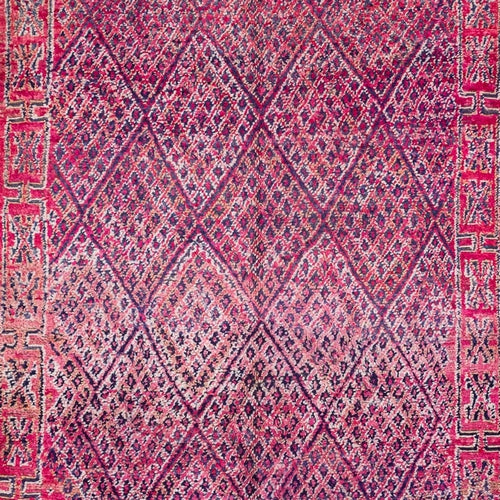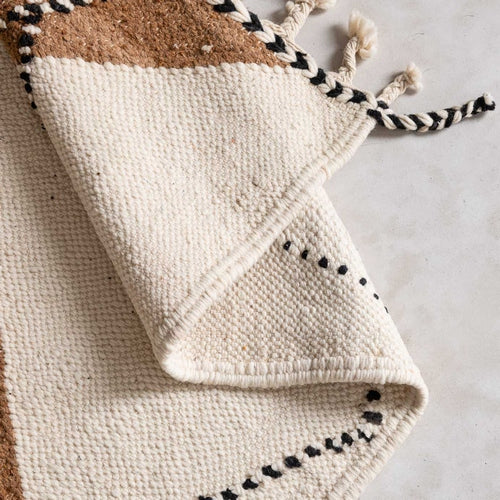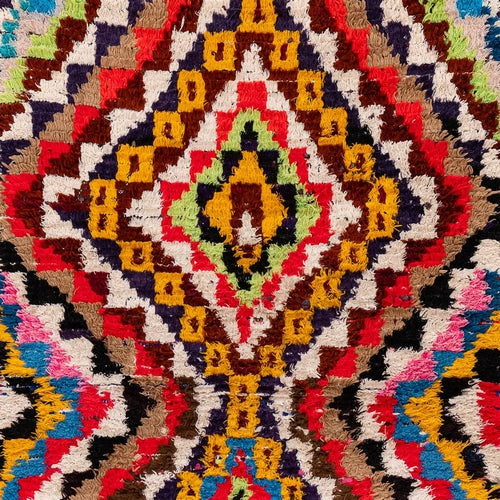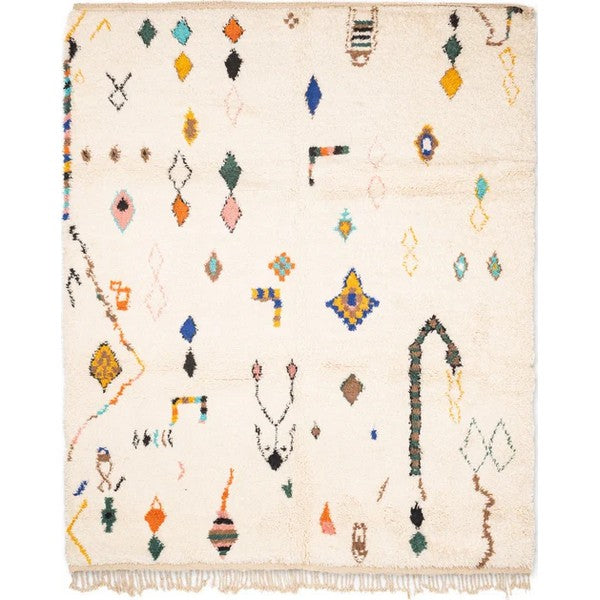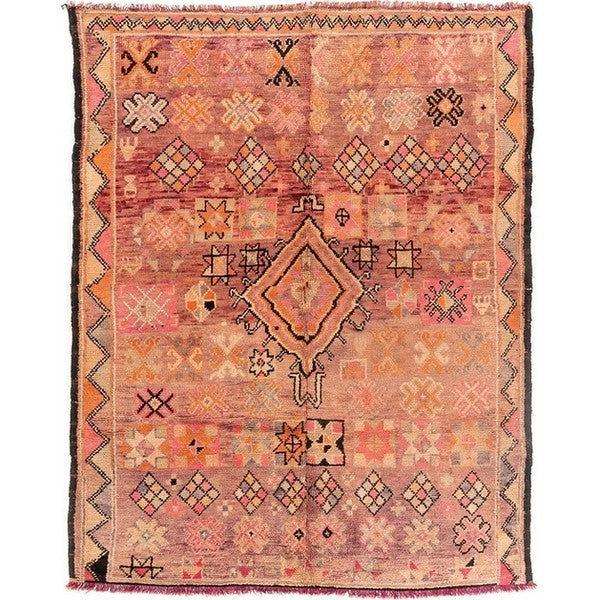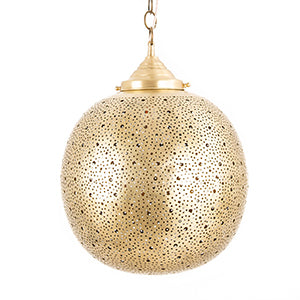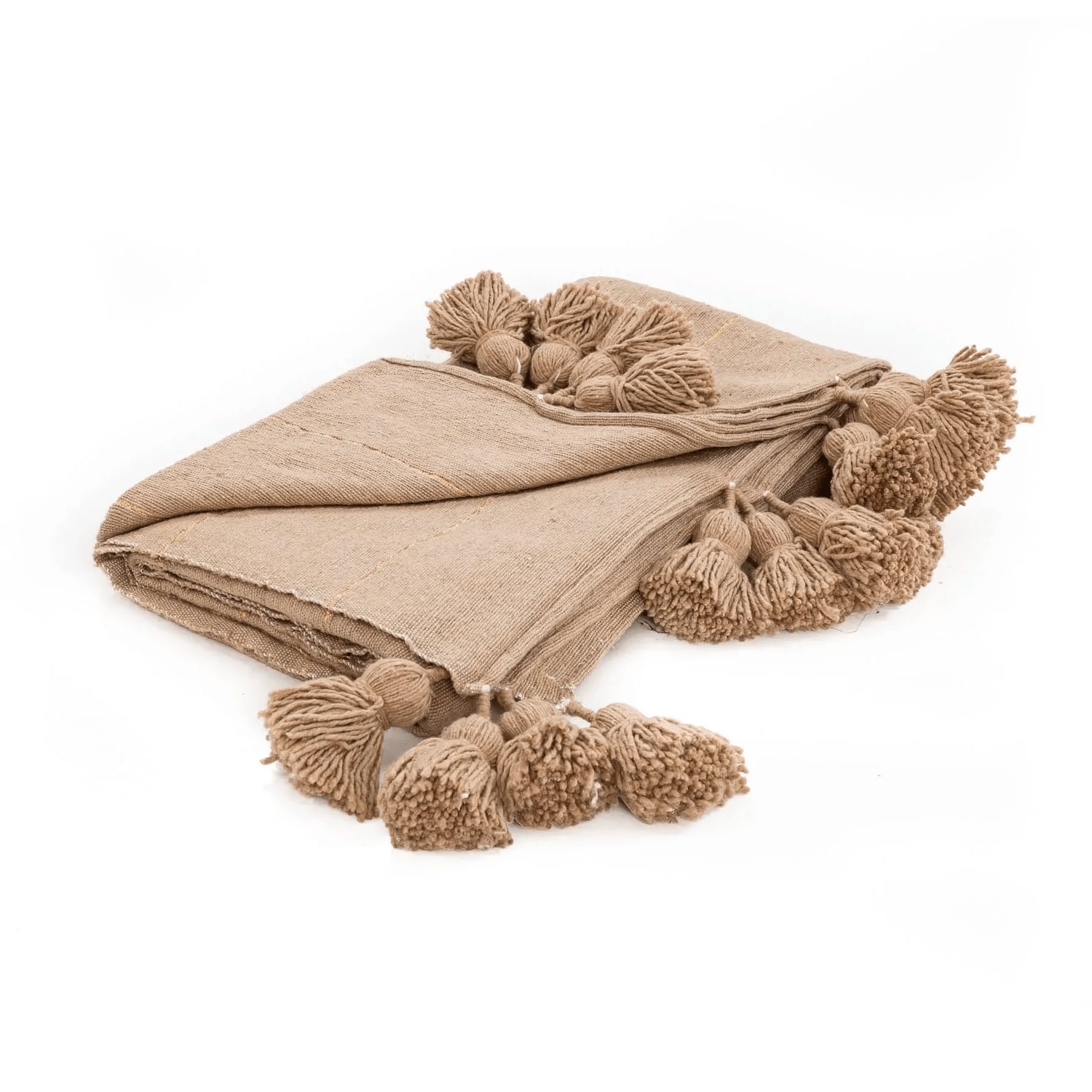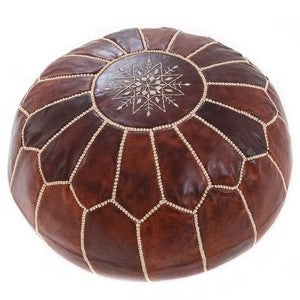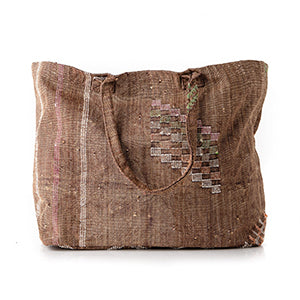Handmade from wool, many of the styles of Moroccan rugs, from Kilim to Beni Ourain, have become an object of desire in the world of decoration. Do you want to bring a little taste of Morocco to your home with a Berber rug?
Architects of stature such as Le Corbusier, Alvar Aalto or Marcel Breuer, began to appreciate the ethnic Berber rugs of Morocco in the 1920s and 30s, attracted by their minimalist and abstract forms.
Their designs and striking colours, and above all, the rejection of figurative representation, attracted collectors and design lovers from all over Europe and North America.
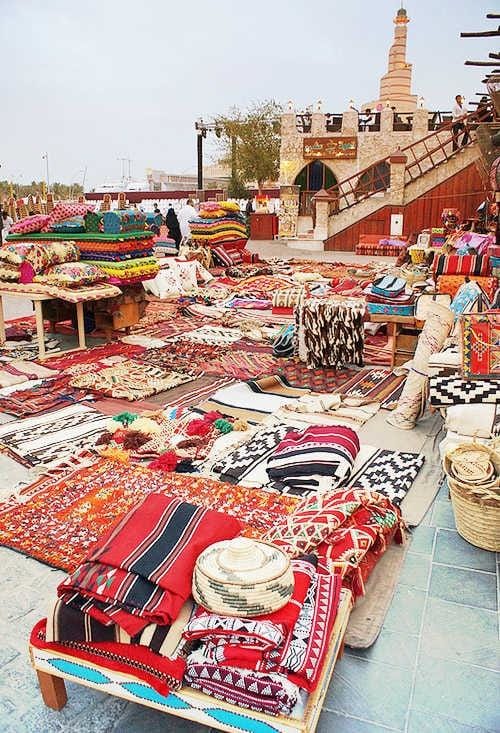
Within the Arab or Moroccan décor, if there is one object that takes all the spotlight, it is the carpet.
Berber rugs
The Berbers were the original inhabitants of Morocco, and for thousands of years, were isolated from external influences. For a long time, the economic activities of Berber farmers and shepherds in Morocco have revolved around sheep and wool.
The carpets, woven by the craftswomen, reflect perfectly the importance of wool in all aspects of the lives of the Berber people.
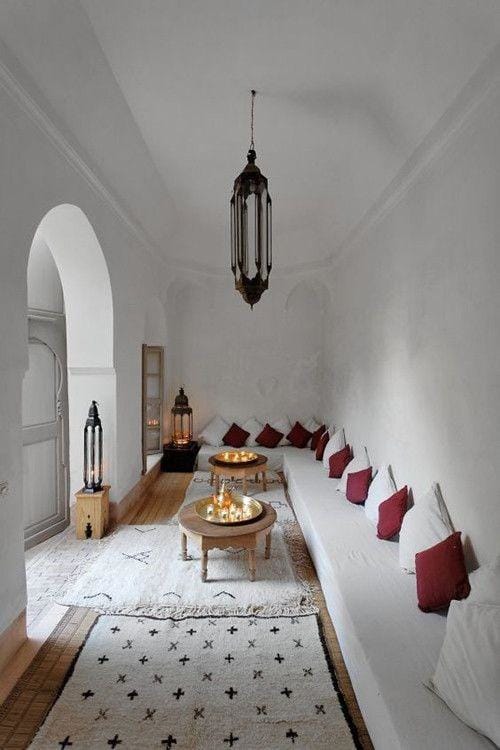
These rugs have been handcrafted in a traditional way, using 100% natural sheep's wool in simple vertical or horizontal looms placed on the floor. These looms were made of wood to be easily dismantled and transported from one place to another.
The size of the loom tends to limit the width of the rug to about 2 meters, just the width necessary for a family's sleep. It is very rare to find an old carpet that is not very long and relatively narrow.
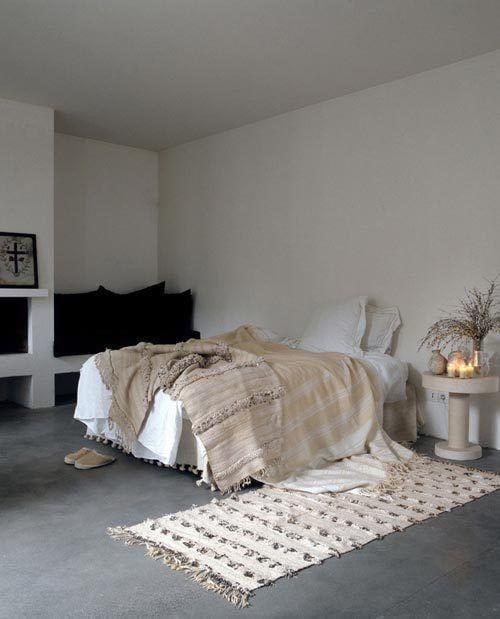
Moroccan rug types
The culture and traditions of each Berber community are very different from one region to another. That is why a carpet, depending on the tribe, can have different styles, colour palettes and weaving techniques.
Beni ourain rug
These rugs, like the wonderful handira blankets, come from the Beni Ouarain people of the Atlas Mountains and were created to protect from the harsh winters in the highlands and cold regions of northern Morocco.
Traditionally, Beni Ourain carpets are neutral with black or brown geometric lines.

Originally, their purpose was practical. They were used to cover the ground in Berber tents or as blankets and bedding to provide warmth during cold desert nights, so they tended to be long, narrow and warm.
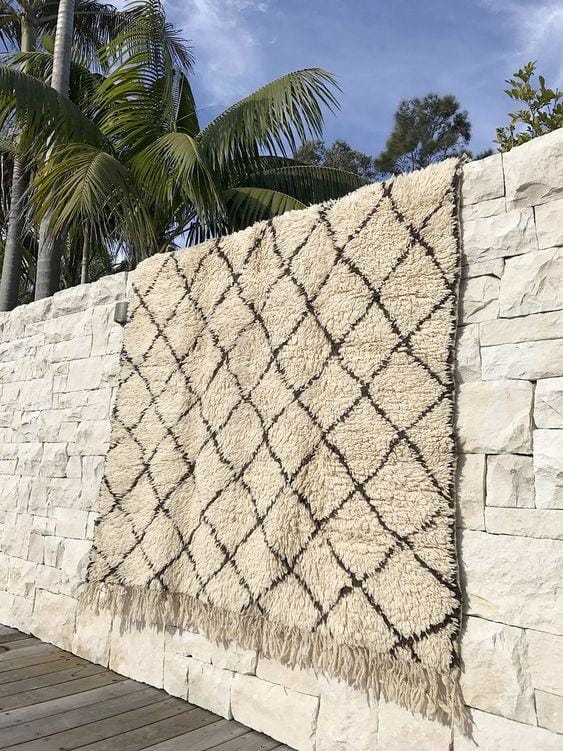
Unlike the Atlas, in lower regions with milder climates, Beni Ourain rugs were generally used as carpets or to cover chairs. So they were smaller and lighter.

The traditional Beni Ourain rug was much smaller. The huge formats we see in the interior decoration of Western houses are almost always new carpets.

However, in the warmer southern regions, women used cotton as a base, while the knots on the rug were made of wool.
Because they integrate very well with almost any type of decoration, whether in a Nordic, modern, vintage, boho or rustic setting, Beni Ourain rugs are nowadays very popular with most interior designers. In fact... they are the most desired!
Moroccan Kilim Rug
As with the thick Beni Ourain woollen rug, the different Moroccan tribes had different traditions in the way they wove the kilim. Some used natural dyes and henna, others used different colours such as dark red, magenta, purple, pink, orange or brown.
There are regional differences in design and colour. For example, the kilims woven in the warm south of Morocco use abundantly brighter colours such as yellow and saffron, shades less visible in the north.
In addition to colours, patterns and symbols also differ from one region to another.
Boucherouite Rug
From the middle of the 20th century, a new type of rug began to be known, when Berber women began to manufacture various types of domestic rugs, using a wider range of wool-free materials, and began to experiment with new non-traditional styles.
Boucherouite means "a torn garment" or "a piece" in Arabic and can use:
- rag strips
- recycled clothing yarns
- wool
- leather
- cotton
- lurex
- The sacks used to transport grain or packaging materials
- nylon
Where the original vegetable dyes were subtle and soft, the dyes contained in these remains are much brighter and darker.
These rugs are characterized by the use of free and asymmetrical shapes, inspired by tribal symbols and the original patterns of traditional woollen rugs, small square shapes and chevrons.
Azilal rug
The Azilal rug, as its name suggests, originates from the remote and rugged region of Azilal, located in the High Atlas Mountains, south of the city of Beni Mellal.
They are woven by Berber women of the region for domestic use and are made of 100% virgin wool, alternating patterns composed of a single line of knots and one or two woven lines, according to a ritual passed from mother to mother.
In terms of design, Azilal rugs combine abstract and irregular patterns with many Berber symbols. They are often decorated with materials such as cotton and wool dyed with vegetable dyes or recycled fibre yarns of different colours. The background of the Azilal carpet is cream or ivory.
These rugs are objects where every woman in the region tells her story. Rural life, motherhood and childbirth are the main themes. In reality, weavers appropriate the tribal signs of their ancestors to express their marriage, pregnancy and daily life.
These rugs were not woven as products for sale, but only for the house and to cope with the cold of the High Atlas. Nowadays, in our Western countries, in addition to their usual use as carpets, they are widely used in interior decoration as beautiful wall ornaments or design objects.
Azilal rug were almost unknown to the market until the 90s. As fruit of the weavers' imagination, they are true works of art comparable to abstract paintings. From Paris to the USA and Tokyo, many galleries exhibit these rugs as works of art. Its strength and originality have deeply inspired artists such as Matisse, Paul Klee and Le Corbusier.
Where to buy a Moroccan rug?
Several villages in Morocco offer real Moroccan rugs but access to them is not easy.
That's why Benisouk helps these people to share their creations with the world.
Browse the wide catalogue of Moroccan rug available at Benisouk, Click HERE.
Now all you have to do is choose the rug that will perfectly sublimate with your interior!
